Phantom types allow using the type system to enforce correctness by distinguishing types that are never instantiated at runtime. The summary describes how phantom types can be used to define a Form trait where the type parameter distinguishes validated and unvalidated form data, ensuring validation is performed before accessing validated data. This provides static type safety without runtime overhead from phantom types, which are never instantiated.
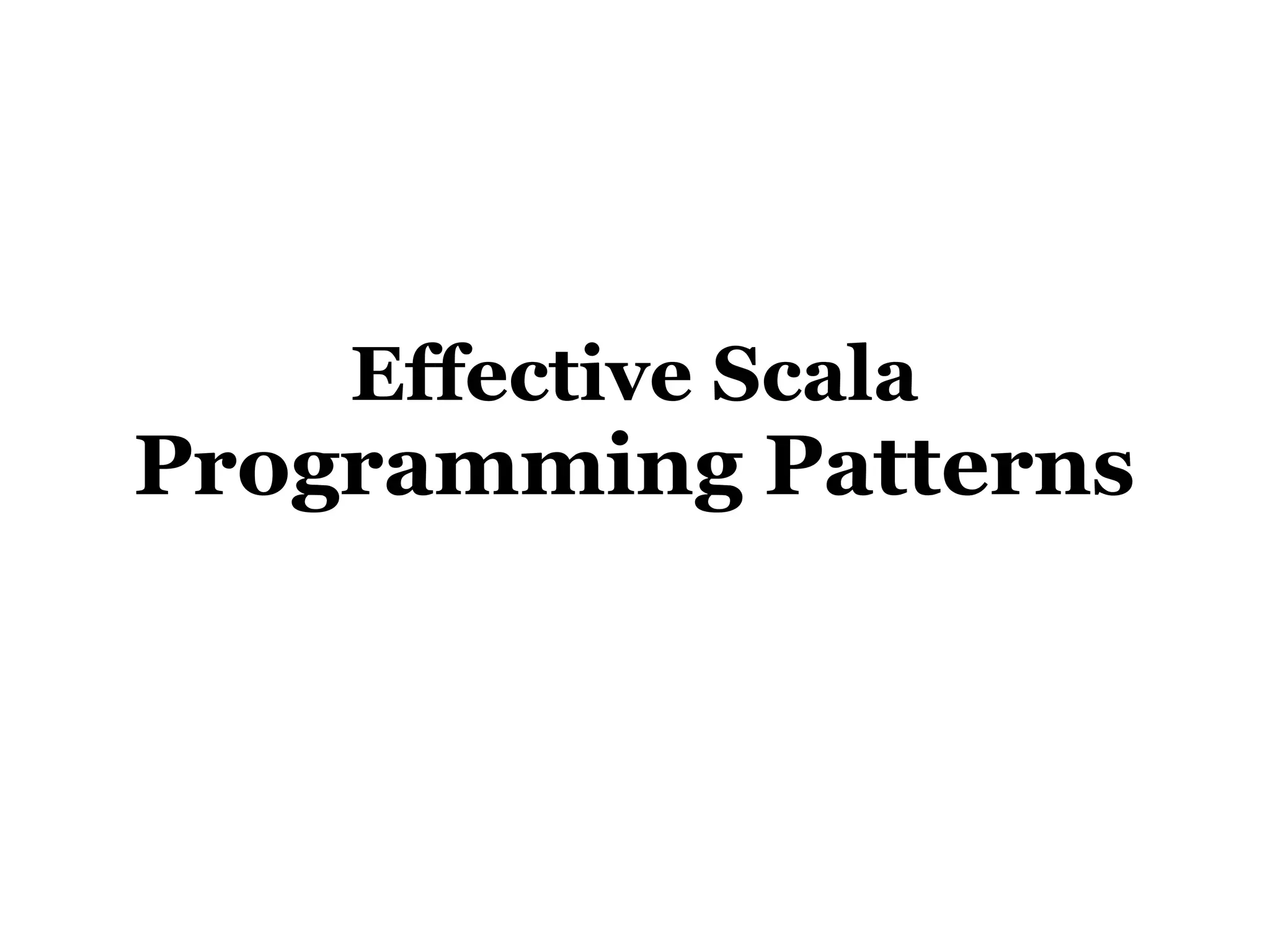
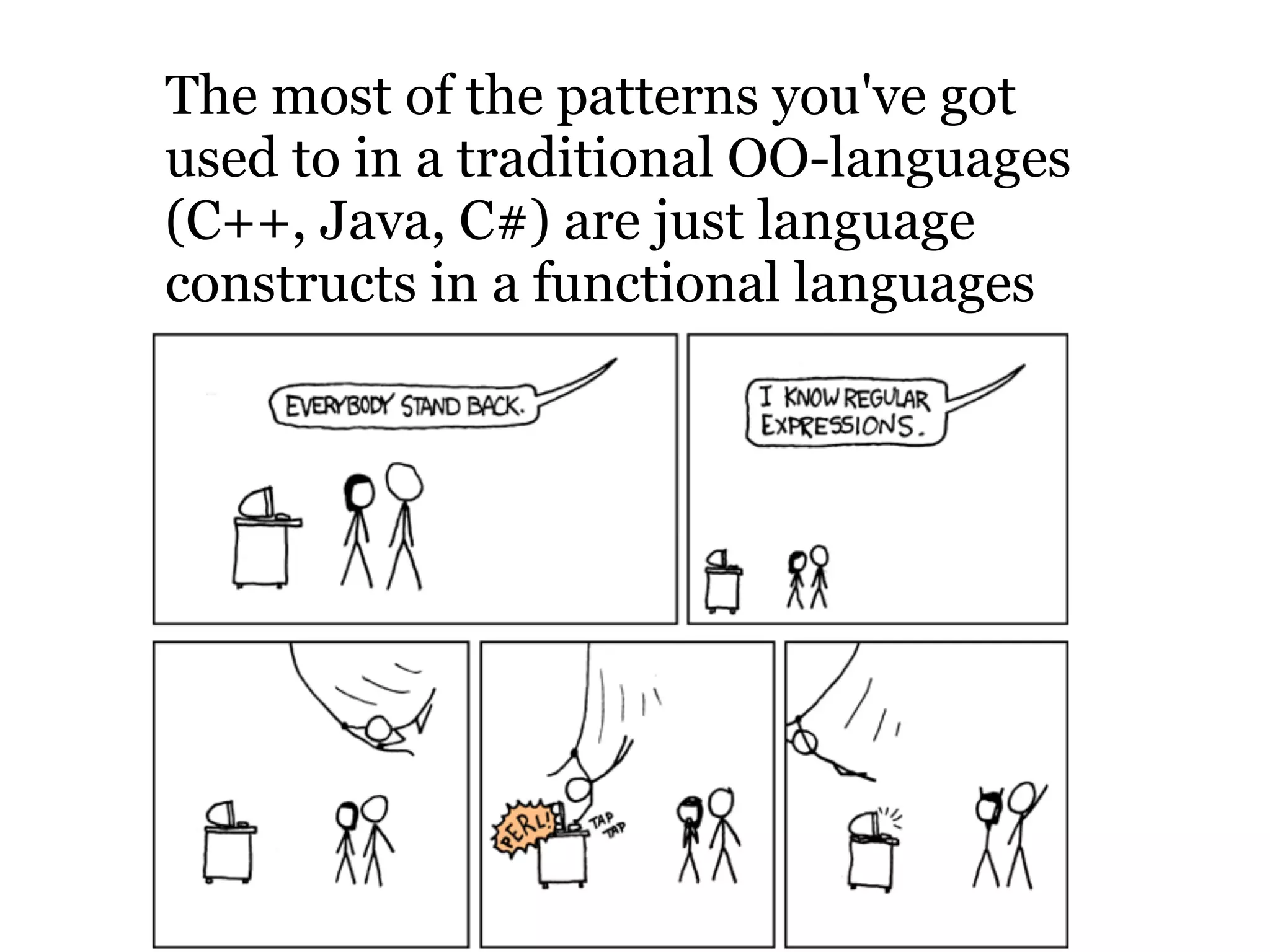
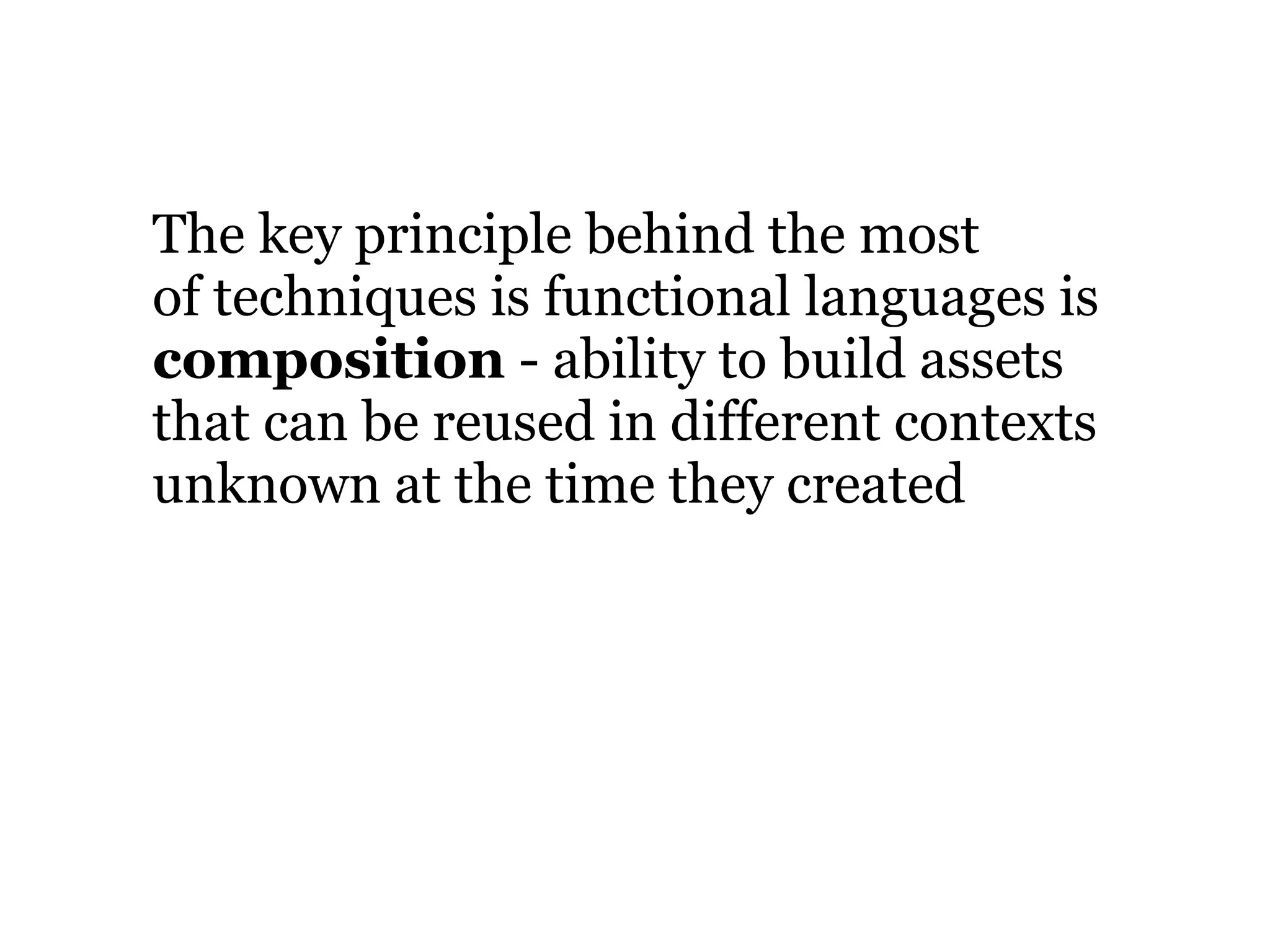

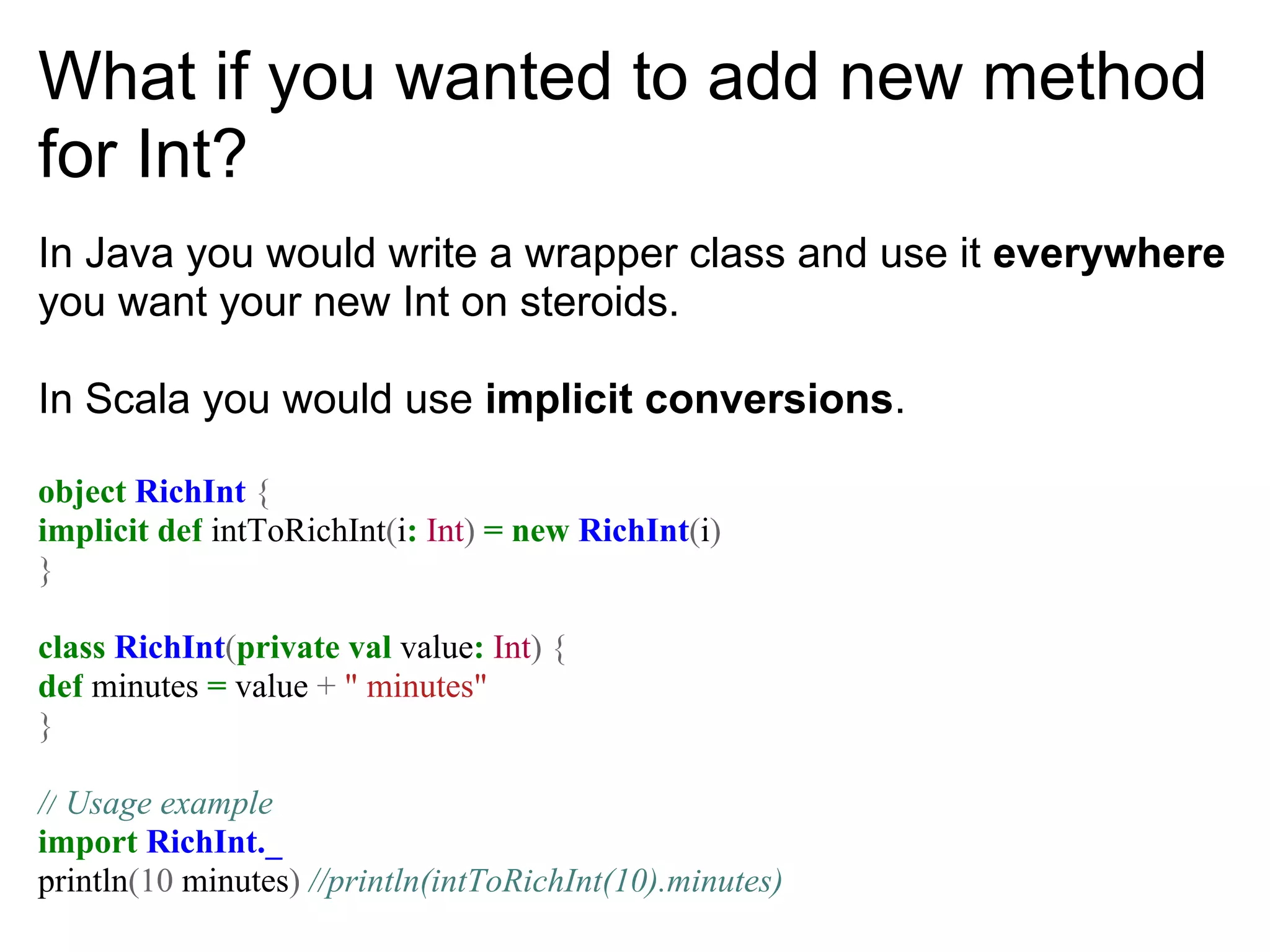


![Cell is an object behaving closely like a
normal variable
Implementation details are hidden from end user
Scala has two features in possesion helping us to implement
such a semi-variable:
1. "First class object" functions
var f: Option[() => Int] = Some(() => 1)
2. Syntactic sugar for update and apply
x() == x.apply()
and
x(<arguments>*) = y == x.update(<arguments>*, y)](https://image.slidesharecdn.com/3-110807145434-phpapp02/75/Effective-Scala-Programming-Patterns-8-2048.jpg)
![Let's design lazy value using Cell pattern
class Lazy[T] { private var v: Option[T] = None private var t: Option[() => T] =
None def update(t: => T) { this.t = Some(t _) v = None } def apply() = { if(v.isEmpty)
v = Some(t.get()) v.get } } val l = new Lazy[Int] l() = { println("Evaluated"); 1} println
("Before evaluated") println(l()) l() = 2 println(l())](https://image.slidesharecdn.com/3-110807145434-phpapp02/75/Effective-Scala-Programming-Patterns-9-2048.jpg)
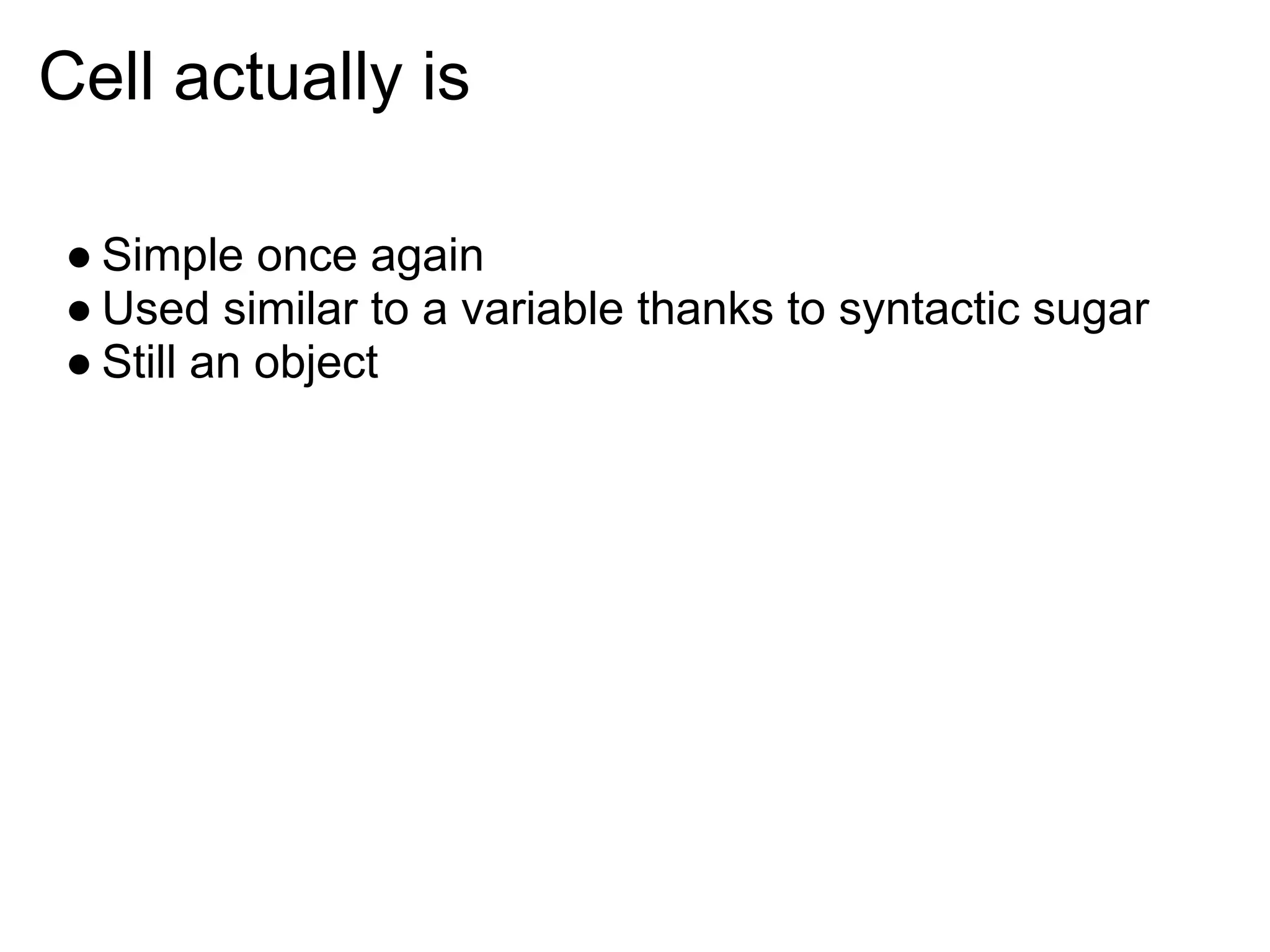

![Unified factory
import java.util.Date trait Vendor[T] { def vend: T } implicit object
DateVendor extends Vendor[Date] { def vend = new Date } object
Vendor { def vend[T](implicit vendor: Vendor[T]):T = vendor.vend } val
date = Vendor.vend[Date]
This guy is like a one man band.
Tell him a type you wanna play with and he'll hand you off an
instance.](https://image.slidesharecdn.com/3-110807145434-phpapp02/75/Effective-Scala-Programming-Patterns-12-2048.jpg)
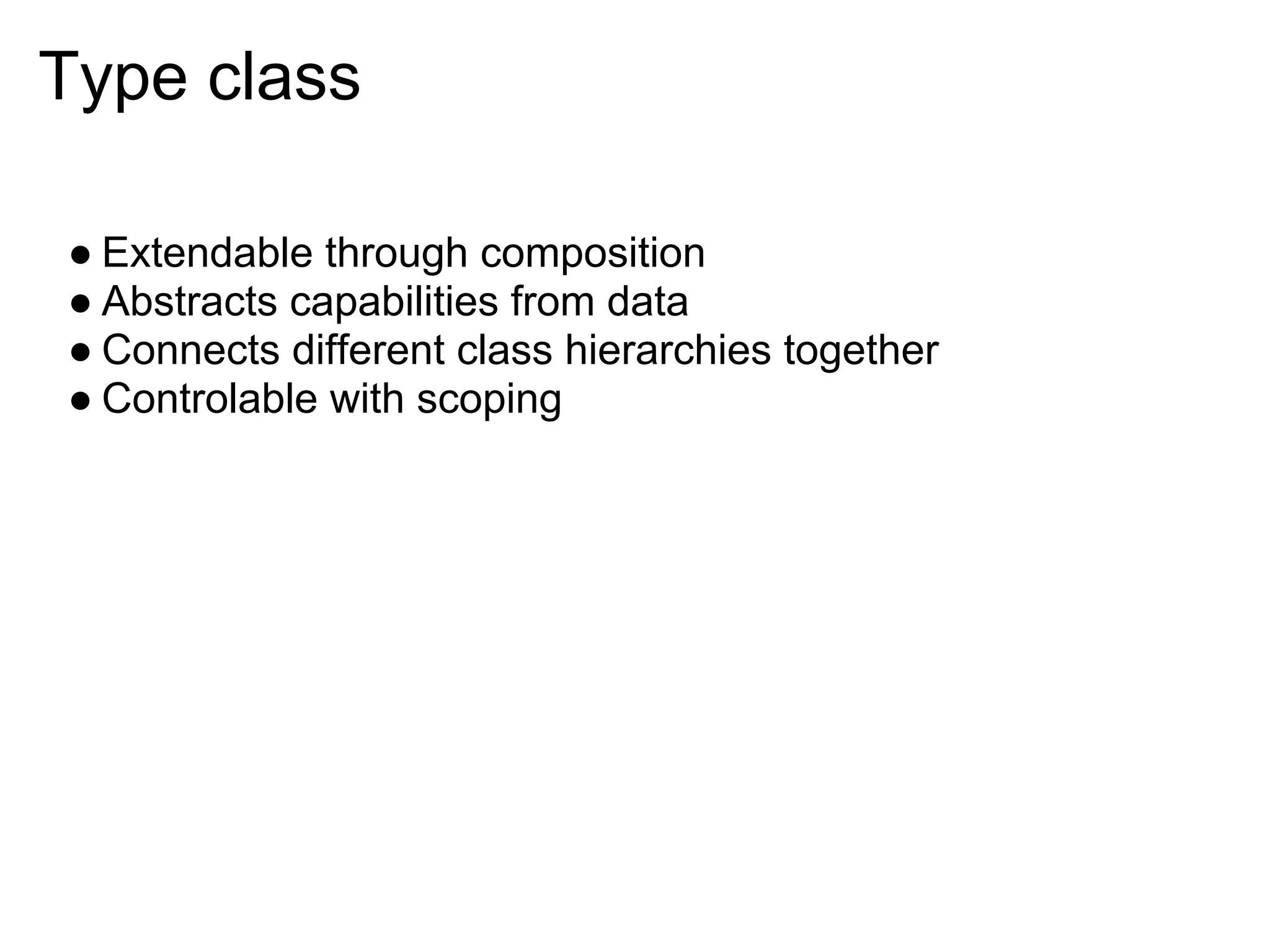

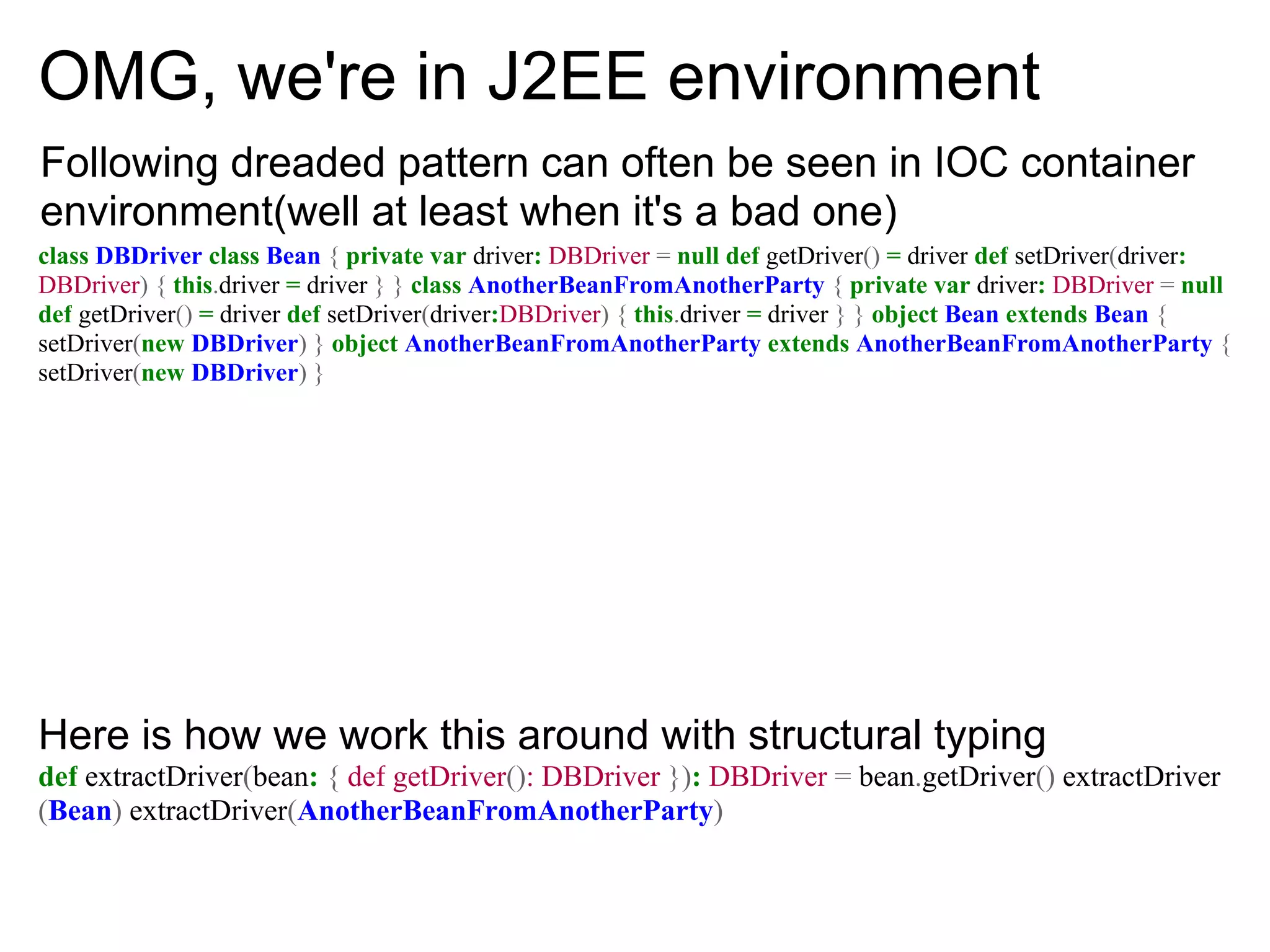
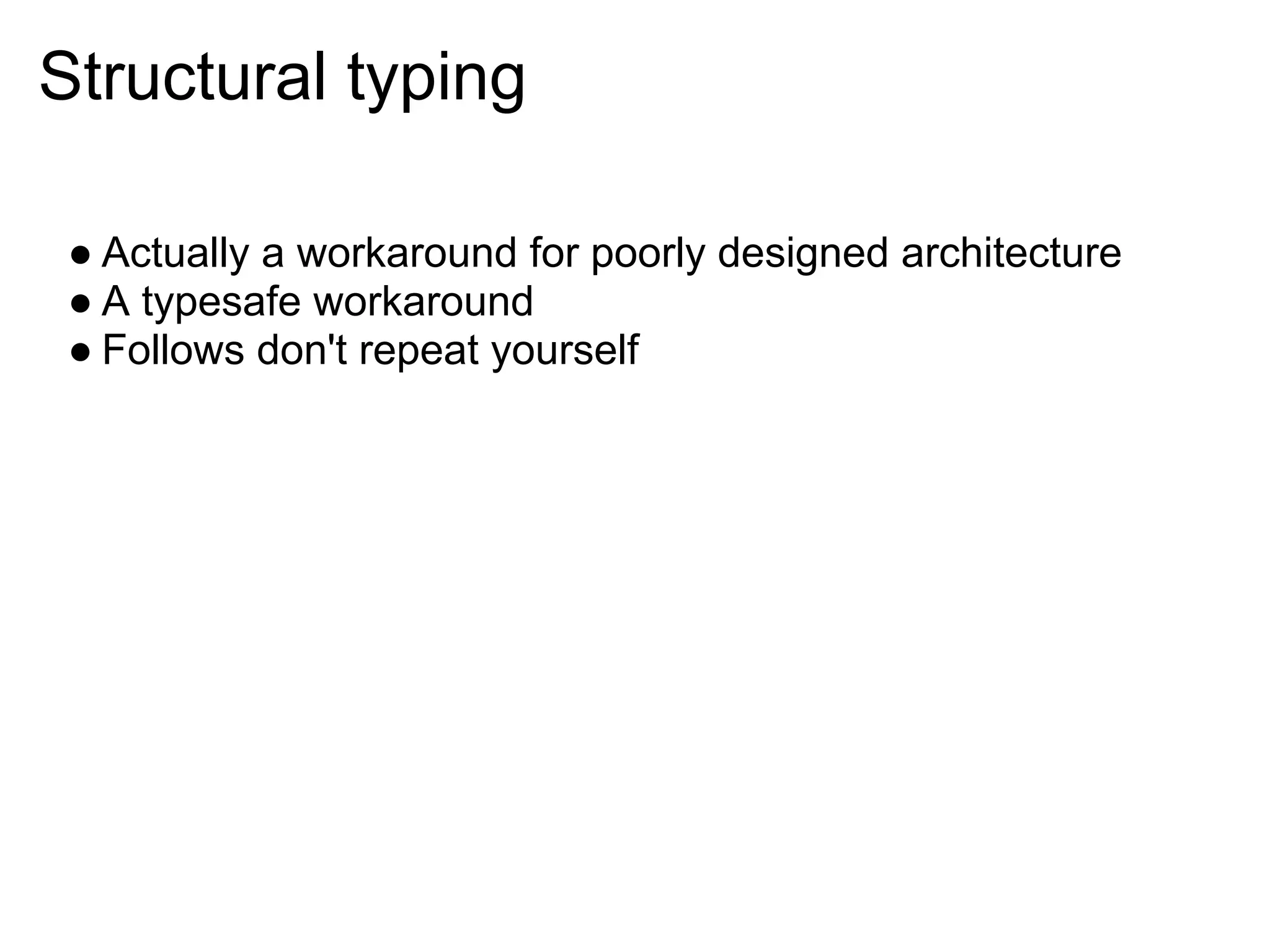

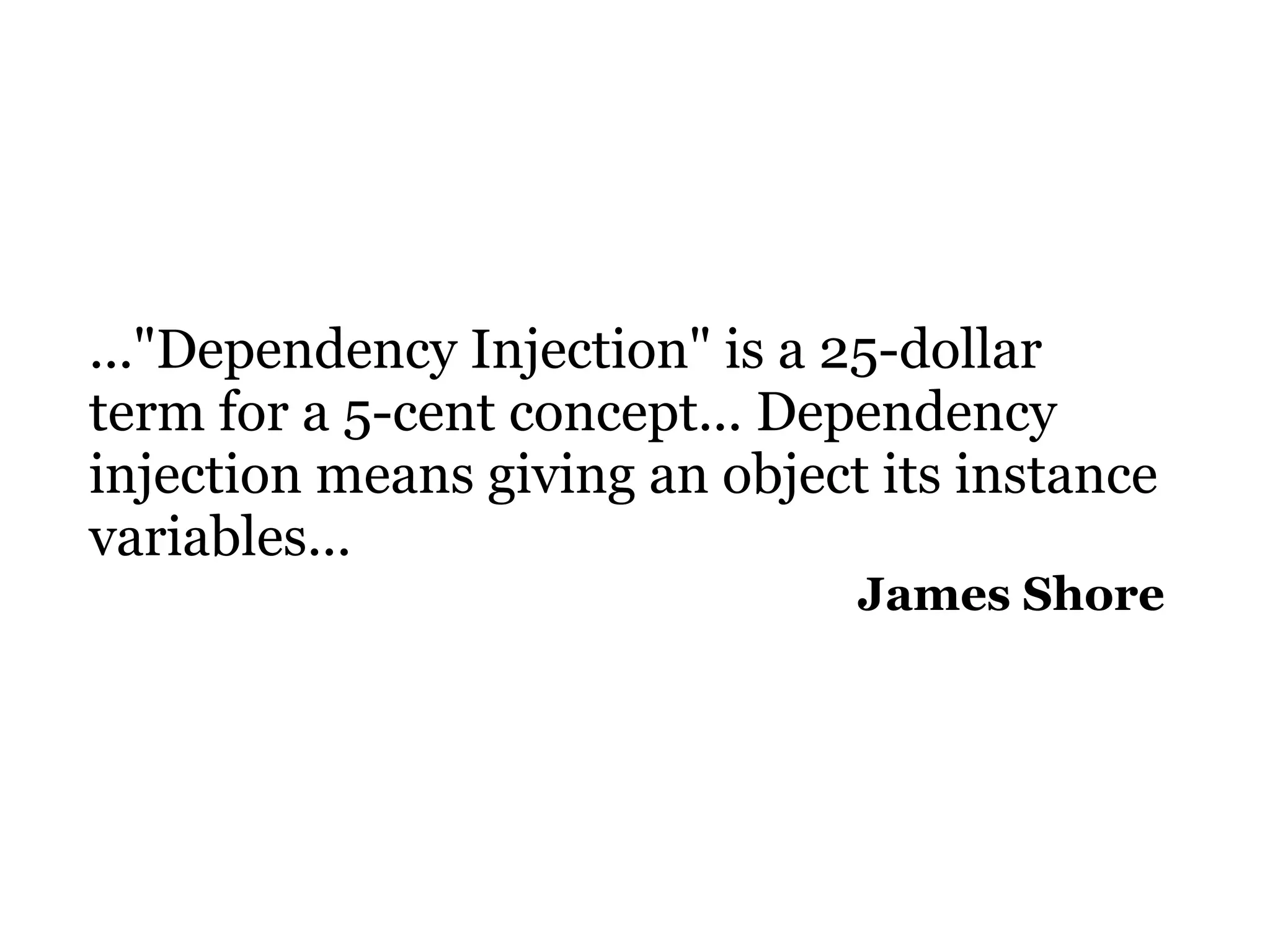
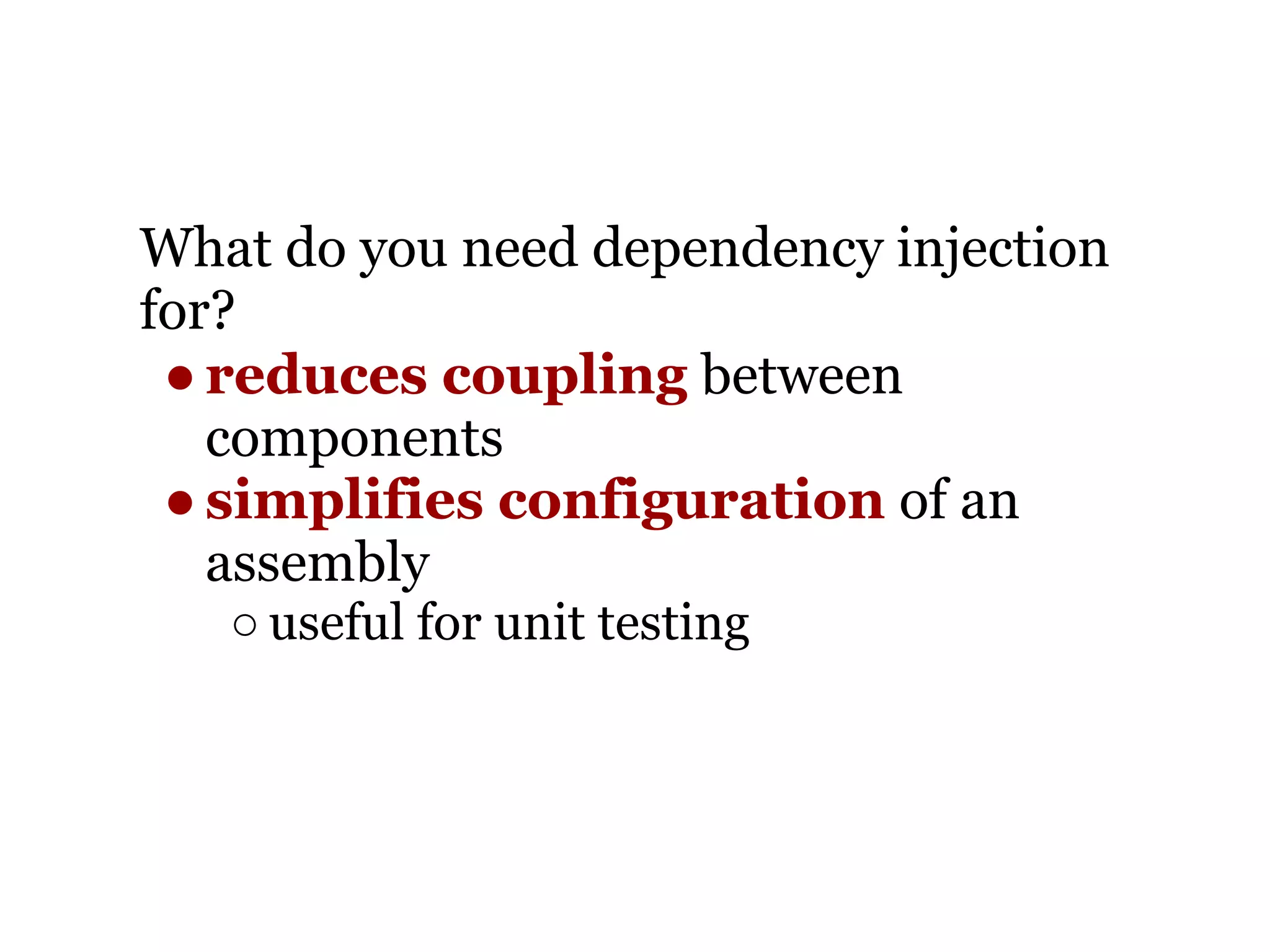
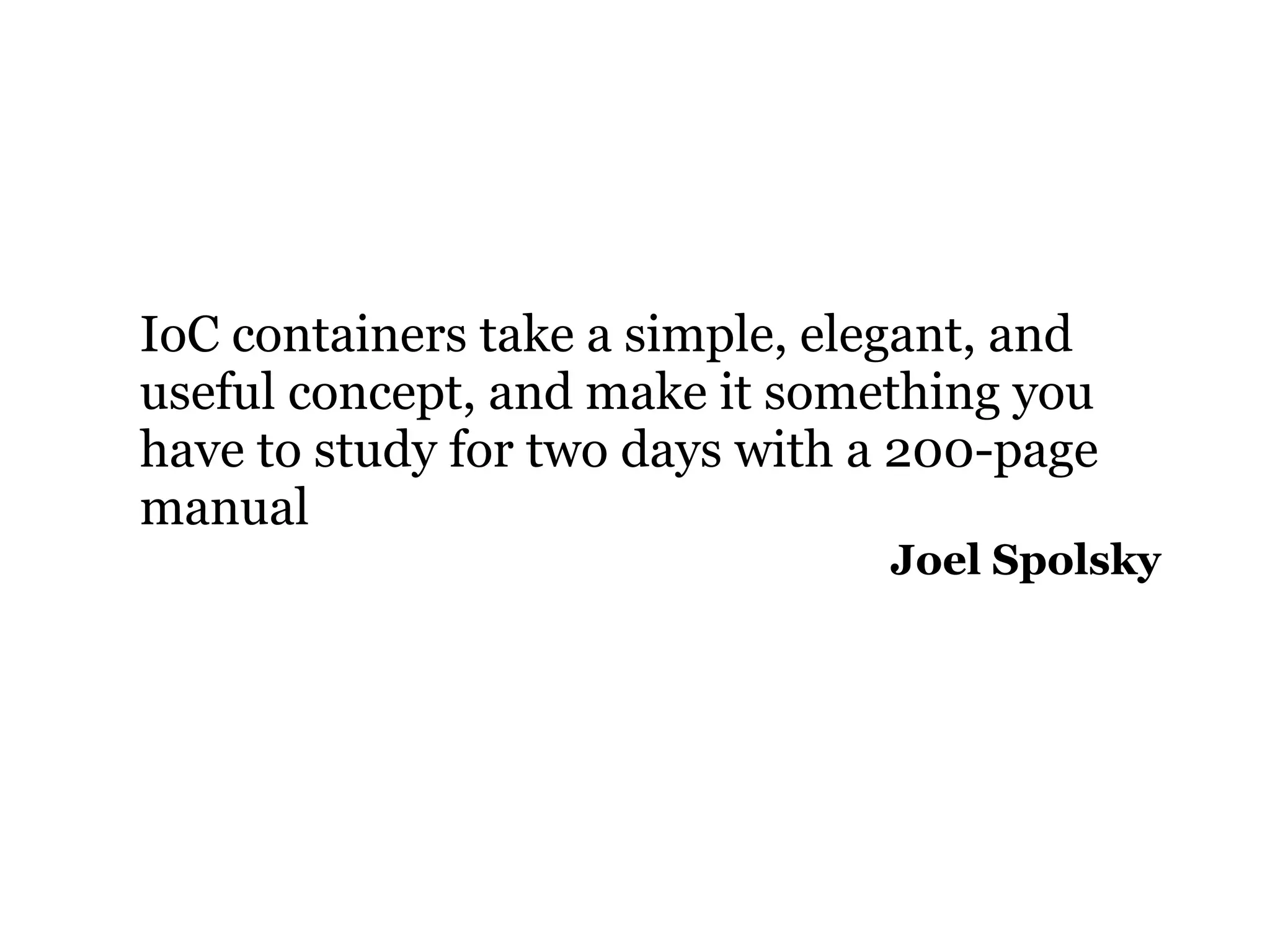


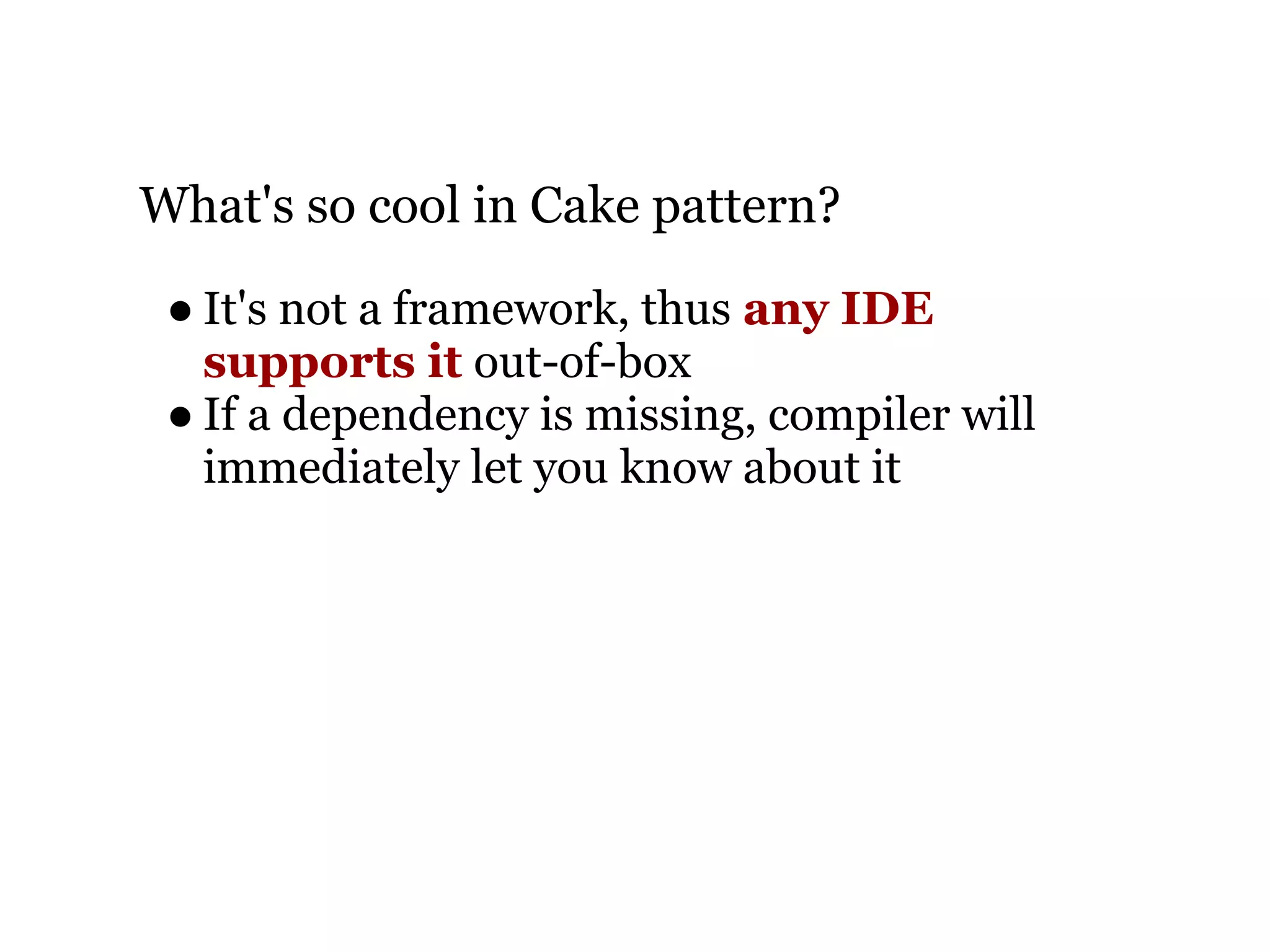

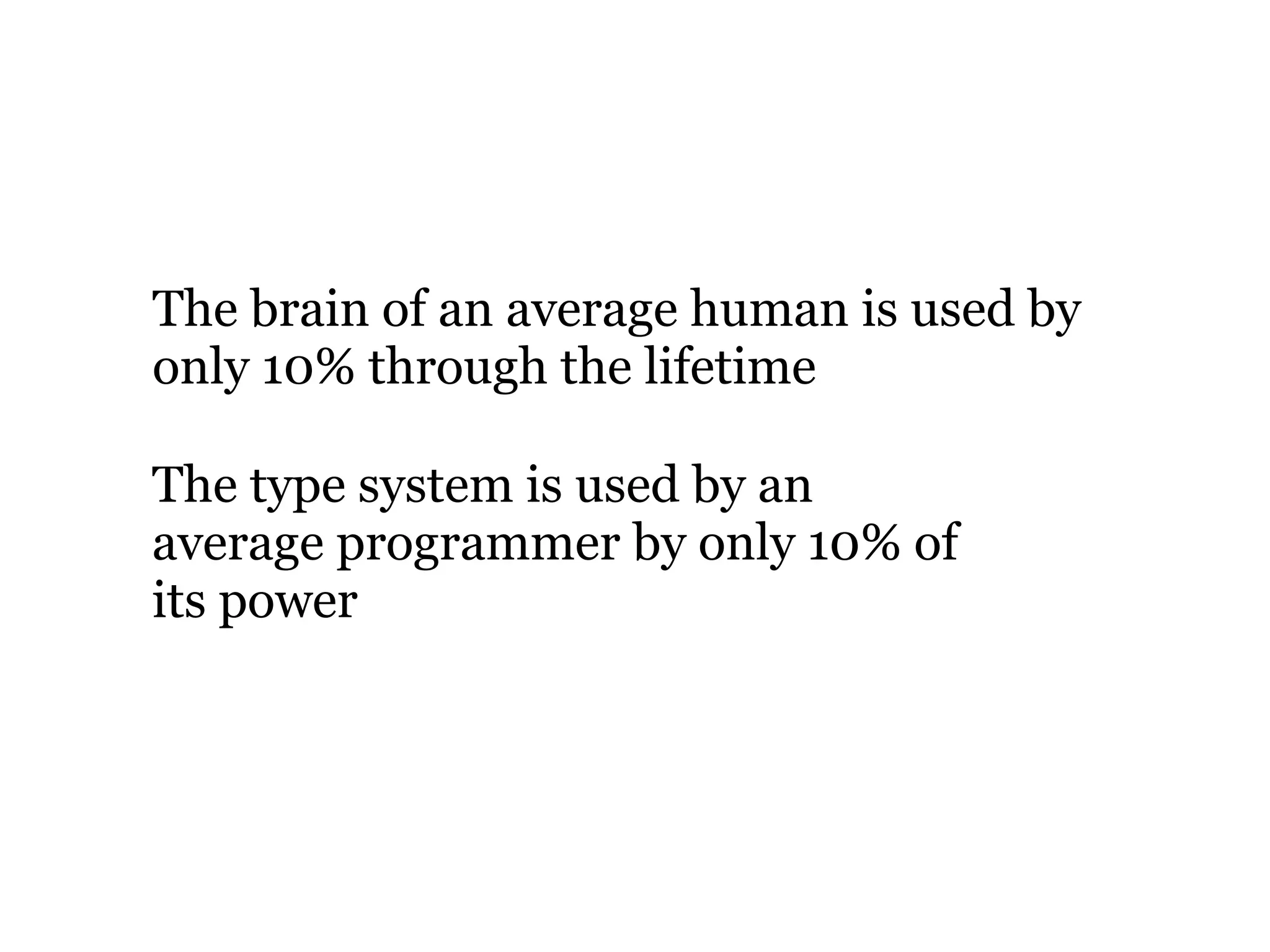
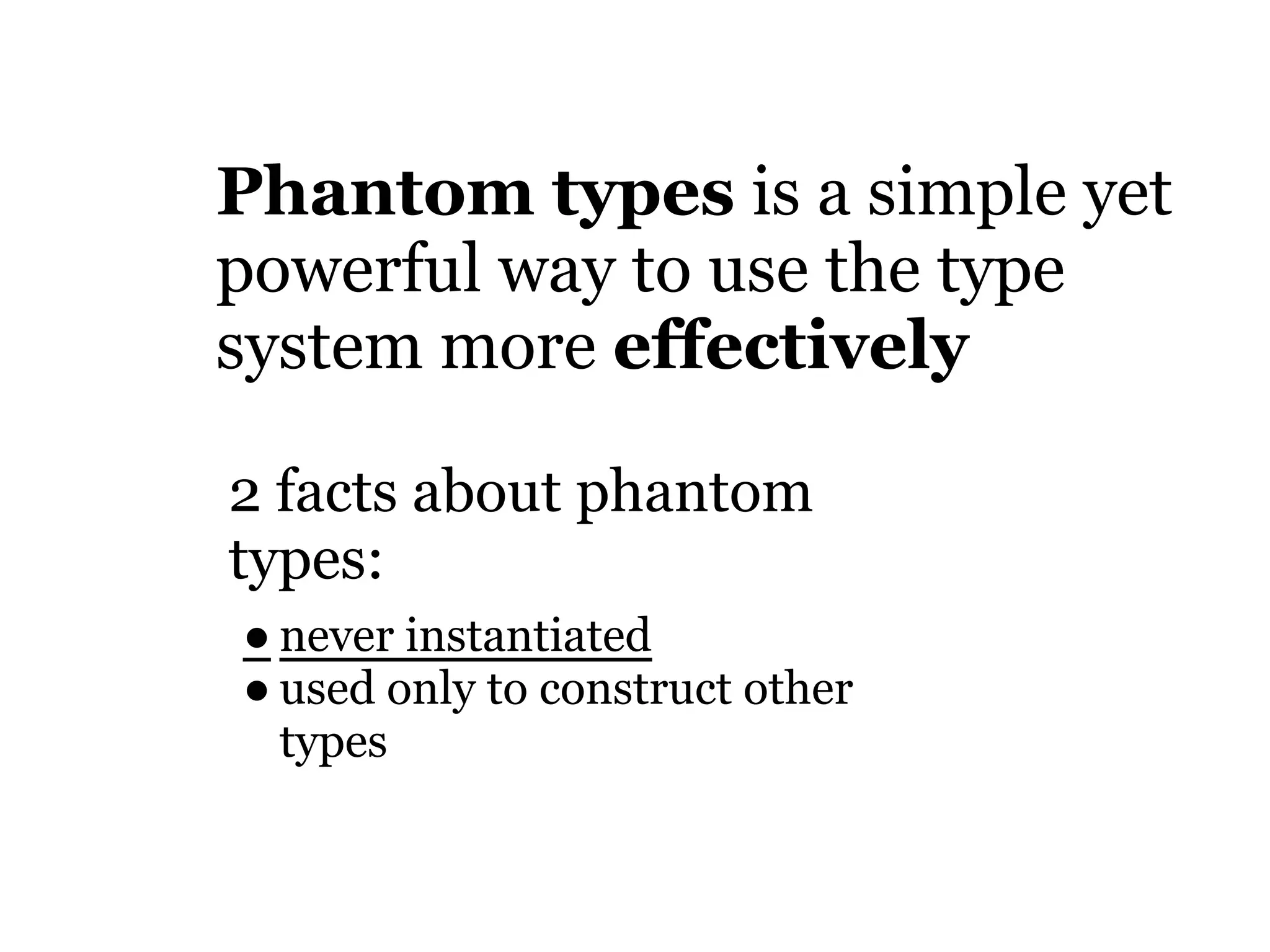
![Let's say, we need a data type to represent
the form data extracted from an HTTP
request:
case class FormData[+T <: Data]
(data: Map[String, String])
trait Data
trait Validated extends Data
trait Unvalidated extends Data
Validated and Unvalidated are phantom
types](https://image.slidesharecdn.com/3-110807145434-phpapp02/75/Effective-Scala-Programming-Patterns-27-2048.jpg)
![trait Form {
val readFormData: HttpServletRequest => FormData
[Unvalidated]
val validate: FormData[Unvalidated] => FormData
[Validated]
val printFormData: FormData[Validated] => Any
}
(readFormData andThen validate andThen printFormData)
(request)
(readFormData andThen printFormData)(request) // FAILS!!!](https://image.slidesharecdn.com/3-110807145434-phpapp02/75/Effective-Scala-Programming-Patterns-28-2048.jpg)
